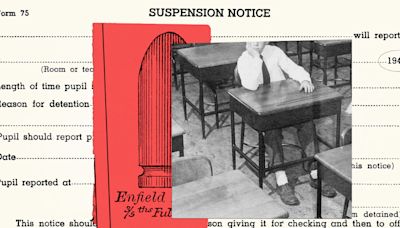Search results
1 day ago · School refusal describes a set of behaviors exhibited by children having difficulty either going to school or staying in school on a regular, or chronic basis. School refusal affects 2 to 5% of children each year, typically between the ages of 5 and 6, and 10 and 11, although we do see it in older kids, too.
3 days ago · Supporting Students. ED is committed to responding to every student's academic, social, and emotional needs so they can thrive in school. ED is committed to helping parents, teachers, and administrators in providing students with the academic, social, behavioral, and emotional support they need to succeed in school and in life.
2 days ago · In 2022, nearly 13.8 million students were chronically absent—missing 18 days of school or more. Students miss school for a wide range of reasons, and frequent absences can cause students to fall behind. Community schools are a research-based strategy that schools can adopt to address the issues underlying chronic absenteeism.
2 days ago · What the numbers tell us. 1. Pre-teen boys scored high for negative behavioral health issues. Pre-teen boys showed the greatest struggle with conduct problems – such as cheating, fighting and stealing – and hyperactive and inattentive behaviors in the last six months of 2023. According to the study, 24% of pre-teen boys experienced mental ...
1 day ago · In 2023-24, the gap between pre- and post-Covid test score averages widened by an average of 36 percent in reading and 18 percent in math, according to the NWEA report. When it comes to education ...
3 days ago · In addition to surging COVID-19 cases at the end of 2021, schools have faced severe staff shortages, high rates of absenteeism and quarantines, and rolling school closures.
4 days ago · Data from the 2021 PIRLS (Progress in International Reading Literacy Study) shows that, on average, boys have lower reading skills compared to girls by the end of primary school. This gap has persisted for over 20 years, with girls outperforming boys in 51 of the 57 participating education systems, with an average difference of 19 points.



